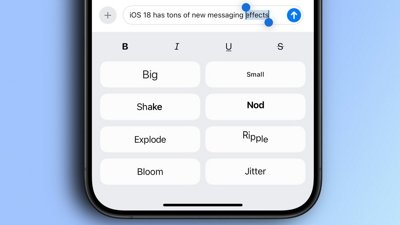The false-positive emergency calling problem isn't just one affecting iPhones, as it seems that the same thing is happening on Android, delayed by the fragmented nature of Android update rollouts.
Apple devices like the iPhone and the Apple Watch have features built in to automatically call for help if the user is involved in a car accident, a fall, or a number of other situations when they may not be able to place the call themselves. However, while useful, there have been instances where the iPhone believes something has happened, with the false positive resulting in a phone call to emergency services that's not actually needed.
It turns out that Android has the same issue.
The UK's National Police Chiefs Council said on Friday an update to Android "added a new SOS emergency function for devices to call 999 through the power button being pressed five times or more," reports the BBC. As the UK endures record-high 999 call volumes, the NPCC believes the Android feature is making a "significant impact" on the total.
Devon and Cornwall Police received 169 silent 999 calls between midnight and 7p.m. BST on Sunday alone. With each silent call needing 20 minutes to be dealt with, the amount of wasted time can add up quickly.
It's also not a problem limited to the UK, as the European Emergency Number Association offered a similar warning of a "surge in automatic false calls originating from Android devices" at the start of June.
However, while the NPCC mentions it is a "new" feature, it's actually one that has been around for quite some time. It was included in Android 12, introduced in 2021.
While it has been usable within Android for practically two years, it's only become a problem now because of the highly fragmented way that device producers roll out updates of Android to devices. Google's own Pixel like uses standard Android, but third-party device makers usually introduce interface and feature changes to Android before distributing it to in-use products, a process that can take a long time to complete.
It is probable that the lag between the feature's introduction and actually being usable on Android smartphones can account for the "new" yet old feature only becoming a problem now.
Google said it was up to device producers to decide whether to offer Emergency SOS, and to fine tune how it works on their products.
"To help these manufacturers prevent unintentional emergency calls on their devices, Android is providing them with additional guidance and resources," Google said. "We anticipate device manufacturers will roll out updates to their users that address this issue shortly. Users that continue to experience this issue should switch Emergency SOS off for the next couple of days."
If an Android smartphone or an iPhone makes a call to emergency services on its own, it's recommended to stay on the line until the responder answers, then to explain that it was a mistake and no assistance is required.
 Malcolm Owen
Malcolm Owen

-m.jpg)






 William Gallagher
William Gallagher



 Oliver Haslam
Oliver Haslam
 Amber Neely
Amber Neely
 Marko Zivkovic and Mike Wuerthele
Marko Zivkovic and Mike Wuerthele










2 Comments
Does the protocol require that a text message be sent to the phone making the emergency call? If not, they should add that, as it would help to alert phone owners and inform then that a false-positive call was made.
These are not automatic calls, this is a different problem from iPhone.